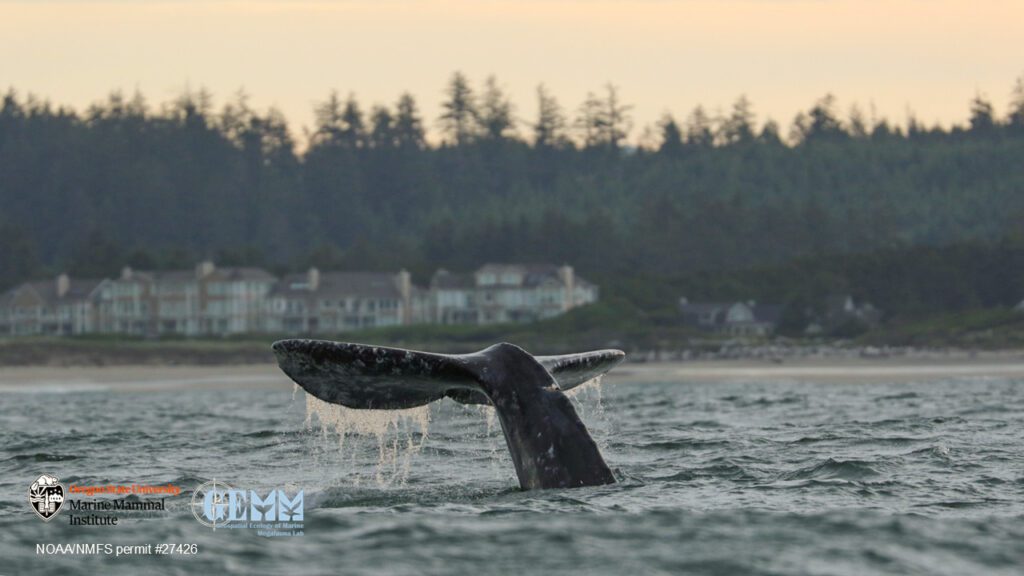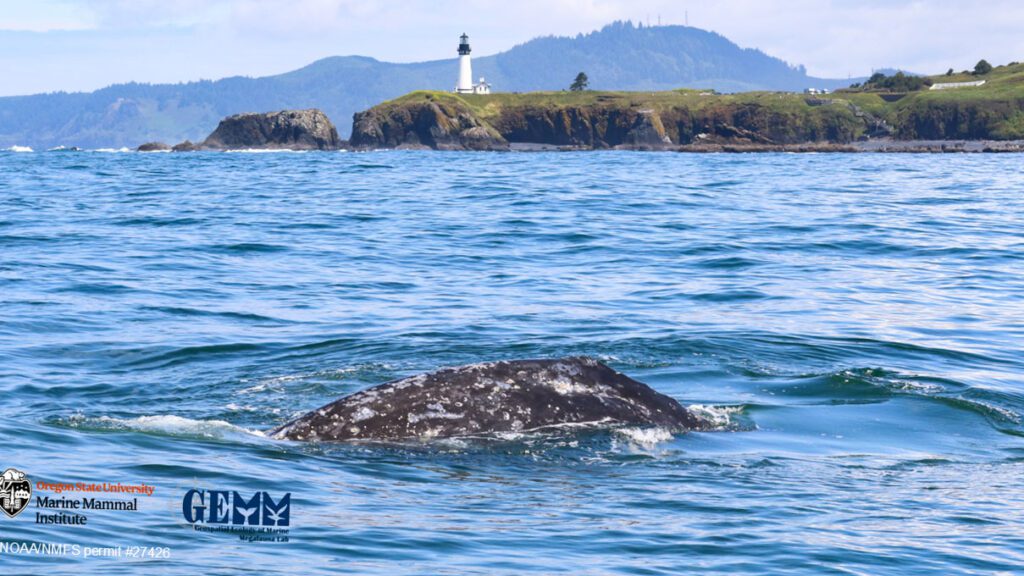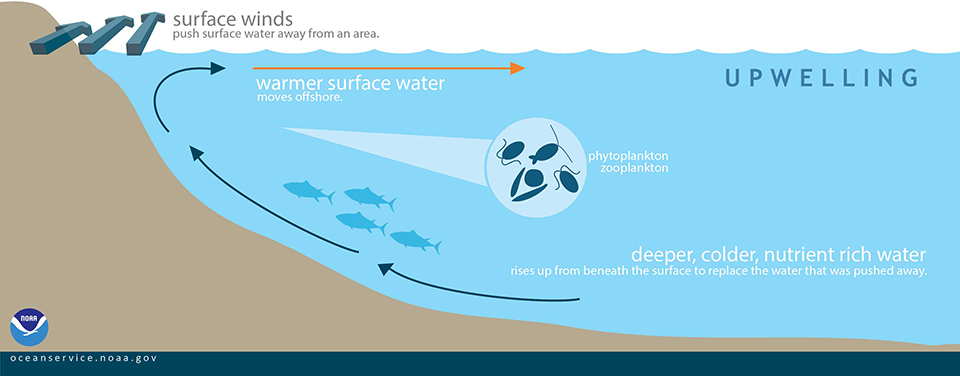Changing Environment
Gray whales in Oregon coastal waters have one primary objective while they are here from May to November: to eat and gain weight. But in order for whales to pack on the tons, there needs to be enough food for them to feast on.
We know that size matters for such large mammals and baleen whales, such as these Oregon gray whales, who only have about half of the year to pack on the energy reserves they will need for the entire year to support the important life events that they will undergo during that time (e.g., birthing a calf or migration). But in order for whales to pack on the tons, there needs to be enough food for them to feast on.

We have conducted several studies at different scales to better understand how changes in the environment impact the zooplankton prey and ecology of gray whales in Oregon coastal waters. Here are some of our major findings:
- Zooplankton abundance and gray whale foraging effort are maximal at moderate values of upwelling and relaxation, highlighting the importance of “intermittent upwelling”, where strong wind-driven upwelling is followed by a period of wind-relaxation, allowing nutrients to be retained within the nearshore habitat and consumed by zooplankton to support their growth and reproduction.
- Kelp health is an important factor for both increased zooplankton abundance and gray whale foraging effort, and zooplankton abundance typically increase with increasing distance to kelp.
- Gray whale habitat preferences change along the Oregon coast, with gray whales preferring hard, reef habitats along the north and central coast, while along the southern coast and the border to northern California gray whales prefer more soft, sandy habitats. These habitat differences are linked to prey availability in the different areas.
- Gray whale body condition fluctuates from year to year, and these fluctuations are linked to a number of environmental variables that sometimes create better or poorer foraging conditions for whales, such as the trade-off between upwelling and relaxation.

Winds along the US west coast are projected to get stronger with climate change, and if upwelling-favorable winds increase in duration and intensity, this could potentially threaten the balance between relaxation and upwelling that we know is crucial to creating a large zooplankton prey base for gray whales. While these changes may mean greater primary productivity on some scales, the effect on nearshore regions and intermittent upwelling is unknown. Thus, it is critical that long-term monitoring of nearshore areas, such as the Oregon coast, continue so that we can better understand how environmental conditions influence the health and ecology of gray whales.
Want to read more? Check out these resources:
Barlow DR, Strong CS, Torres LG (2024) Three decades of nearshore surveys reveal long-term patterns in gray whale habitat use, distribution, and abundance in the Northern California Current. Scientific Reports 14, 9352 https://doi.org/10.1038/s41598-024-59552-z
Dawn AH, Hildebrand L, Sullivan FA, Barlow DR, Torres LG (2025) Intermittent upwelling impacts zooplankton and their gray whale predators at multiple scales. Marine Ecology Progress Series, https://doi.org/10.3354/meps14721
Hildebrand L, Derville S, Hildebrand I, Torres LG (2024) Exploring indirect effects of a classic trophic cascade between urchins and kelp on zooplankton and whales. Scientific Reports 14, 9815. https://doi.org/10.1038/s41598-024-59964-x
Blogs:
Intermittent upwelling impacts zooplankton and their gray whale predators https://blogs.oregonstate.edu/gemmlab/2023/10/30/intermittent-upwelling-impacts-zooplankton-and-their-gray-whale-predators/
New publication reveals gray whale habitat use patterns over three decades in the Northern California Current https://blogs.oregonstate.edu/gemmlab/2024/06/03/new-publication-reveals-gray-whale-habitat-use-patterns-over-three-decades-in-the-northern-california-current/

